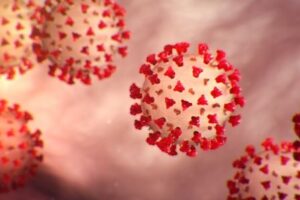
Visiting our affiliate center in Savannah on Cinco de Mayo, I was asked to talk about creativity in the context of Zen. In a way, that is a misconstruction, as Zen is the heart of creativity, not merely a context for creativity. So, even to speak of creativity and Zen is to make a separation that does not exist. Nonetheless, here is a beginning attempt to explore the relationship to foster clarity.
Creativity is variously defined in professional circles associated with the so-called creative professions. So-called because creativity has nothing to do with what one does, but is more an attitude of mind, regardless of the specifics of one’s activities or livelihood. One definition of creativity in the design profession is making the familiar strange. When we consider what is meant by the familiar, it is seen to be the broad and deep category of everyday experience and knowledge. In fact, all knowledge of our world is, by definition, familiar. Otherwise, it would not qualify as knowledge.
…sitting in zazen for long periods of time, the familiar context of one’s very consciousness—eye, ear, nose, tongue, body, and mind; seeing, hearing, smelling, tasting, touching and thinking—becomes strange, curiouser and curiouser. Sensory adaptation sets in on an incremental—and eventually profound—level. Samadhi becomes the platform for kensho—seeing the nature.
zenkai taiun michael elliston, roshi
In design school, certain exercises are engaged in pursuing this goal of making the familiar strange, including writing one’s signature, which is the most familiar mark one makes on a daily basis. Only writing one’s signature over and over, a thousand times — on the same sheet of paper, until it becomes something other than the familiar signature mark: a pattern, a texture. Or in large scale, on a sheet of butcher’s paper, using a rag dipped in ink instead of a pen or pencil — a piece of graffiti, crude calligraphy, on a monumental scale. It becomes unfamiliar. Like saying aloud the word “elephant” over an over, until it loses all connection with the reality of an elephant. With repetition words become neutral, abstract—mere sound. Surpassingly strange sound, at that.
Similarly, after sitting in zazen for long periods of time, the familiar context of one’s very consciousness—eye, ear, nose, tongue, body, and mind; seeing, hearing, smelling, tasting, touching and thinking—becomes strange, curiouser and curiouser. Sensory adaptation sets in on an incremental—and eventually profound—level. Samadhi becomes the platform for kensho—seeing the nature.
It is difficult to accept that simply sitting still enough, for long enough, could result in any significant change, particularly in the direction of spiritual awakening. Epiphany is usually dependent upon extraordinary circumstances, in human estimation. But it does. Because sitting as still as Zen suggests, and for as long, amounts to a very extraordinary circumstance. It is not natural in that sense. The effect of zazen is, in fact, inevitable, as long as one does not give up. This is the secret of its power. Human beings are not built to spend long periods of time “doing nothing.” They are designed (though not necessarily by an intelligent designer) to be busy, busy, busy, always pursuing something interesting, challenging their own intelligence and exploring the mysteries of an expanding universe, much like their close cousins, the monkeys.
There is a fundamental error in the thinking of those who assume that people, left to their own devices, will be content to sit back and live on the dole, accepting the largesse of the “makers” while enjoying a cushy existence as a “taker.” One of the unwritten laws of human nature is that people, like monkeys, eventually get bored with doing nothing. If they are living in relatively dire straits, the boredom may tend to inspire unhealthy actions, such as turning to sex, drugs, and alcohol to self-medicate, or to crime to afford the sex, drugs, and rock-and-roll.
If the person is relatively well-off in terms of meeting the basic needs of living, however, they may turn to something a bit more productive. Buddhism, alone among the world’s religions, has a high regard for the potential of human nature, without intervention of a savior. While realistic about the downside of human corruptibility, Zen promotes the upside of Buddha– or awakened-nature. This awakening may be thought of as the highest, most profound of creative events, wherein the one who awakens awakens to the true self, through a process of “turning about” in the inmost consciousness, a phrase attributed to the historical Buddha, Shakyamuni. This optimistic regard stand in stark contrast to the usual condemnation of people as born sinners, Jeckyll and Hyde types, and other negative stereotypes from religious, philosophical and scientific models of human behavior.
In Buddhism, one meaning of dharma—usually translated as “teaching,” or “truth”—is “law,” in the sense of the way things work on a universal scale. Nothing that exists can violate this dharma, the principles of how things exist. Dharma also has the meaning of “being,” in that all things in their own nature manifest the truth of dharma, sentient and insentient beings alike; and each has its own unique “dharma location” in the scheme of things. Thus “dharma” is an inclusive term, subsuming all teachings of Buddhism, such as karmic action and consequence, 12-fold Interdependent Origination, the Four Noble Truths and Eightfold Path. Science and Buddhism are both keenly interested in understanding these laws of existence, including those of human action.
Creativity is thus also subject to certain laws. Working with any medium includes a wakeup call to understand, and come into accord with, the nature of the medium. Oil paint behaves vastly differently from watercolor, and the surface on which either is placed is a determining factor in the outcome. Some media are considered “unforgiving” while others are thought of as more forgiving. Any artist is engaged in an activity that simultaneously celebrates freedom while respecting the limits of the physical universe, whether in the field of art, architecture, engineering, poetry, music or dance.
Art is a term that, as Ambrose Bierce says in The Devil’s Dictionary, “has no definition.” Under it can be subsumed all the plastic and performing arts of tradition, as well as any behavior not ordinarily classified as an art. “The art of…” can include any activity one can think of to fill in the blank. Zen points to refining life itself, as Uchiyama Roshi suggests in Opening the Hand of Thought. In other words, training oneself in the “art of living.” In ordinary circles, this would translate into “living large”: being more successful, happier, handling social and family relationships better, generally improving the circumstances of life, various other relativistic “refinements.” But in Zen, it just means really living the life that is already in front of us, just as it is. In order to live that life fully, one must first wake up to it, fully. In order to wake up fully, one must first see through the delusion of life as we think it is. This awakening moment was captured elegantly and simply in a poem I came across, source long since forgotten, but written by a contemporary Japanese businessman, who one day sitting in his office, noticed something very strange and different about the same-old same-old:
And there sat the old man, in all his homeliness
Nothing had really changed, and yet the humdrum had become marvelous; the ordinary had suddenly been revealed as miraculous. The key word for me, is homeliness. What does that mean to you? It calls to mind the stain in the wall; the smell of musty places; dank corners of a crawl space buried deep in the back of the mind; the scent of grandpa’s pipes. The everyday trivia and trials of one’s existence, imbued with a scintillating, shimmering reality redolent of our fondest, most nostalgic memories. Coming home.
This is the kind of creativity that Zen points to. It is not sentimental, and does not depend on particular circumstances, nor on any specific kind of activity, other than being alive as a human being. It is natural that life wears us out, makes us tired and unwilling or unable to embrace the next moment with the full vim and vigor we once did, as a child full of wonder and curiosity. But as a famous person was said to have said, unless ye become like unto a little child, ye shall not enter into this kingdom that is staring you in the face, but will be forever condemned to view it as through a glass darkly. Zazen is the window cleaner. Time for a spritz.









